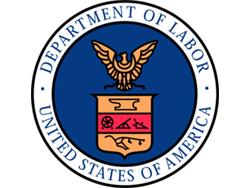Inflation Index Declined 0.3% in April for First Time in 8 Months
Washington, DC, May 11, 2022-The Consumer Price Index for All Urban Consumers (CPI-U) increased 0.3% in April on a seasonally adjusted basis after rising 1.2% in March, the U.S. Bureau of Labor Statistics reported.
Over the last 12 months, the all items index increased 8.3% before seasonal adjustment. Increases in the indexes for shelter, food, airline fares, and new vehicles were the largest contributors to the seasonally adjusted all items increase. The food index rose 0.9% over the month as the food at home index rose 1.0%. The energy index declined in April after rising in recent months. The index for gasoline fell 6.1% over the month, offsetting increases in the indexes for natural gas and electricity.
U.S. consumer inflation eased in April to an 8.3% annual rate, taking a slight edge off the steepest run of price increases in four decades as energy prices moderated.
“The Labor Department’s consumer-price index reading last month marked the first decline in eight months, down from an 8.5% annual rate in March,” reports the Wall Street Journal.
“The annual rate of inflation has risen sharply since early 2021, when the U.S. economy’s rebound from the Covid-19 pandemic accelerated, leading to supply disruptions and other imbalances that have put upward pressure on prices.
“On a monthly basis, the CPI rose a seasonally adjusted 0.3% last month after a 1.2% increase in March, the Labor Department said Wednesday. However, the so-called core-price index-which excludes the often-volatile categories of food and energy-increased 0.6% on the month, a sharp pickup from March’s 0.3% gain. That compares with an average monthly rise of 0.2% for both measures in the two years before the pandemic.
“On a 12-month basis, the core-price index climbed 6.2% in April, down from March’s 6.5% rise, which was the highest rate since August 1982.
“High inflation is a downside of strong growth, fueled in part by low interest rates and government stimulus to counter the pandemic’s impact. The Federal Reserve faces the tricky feat of tightening monetary policy enough to quell inflation and cool the economy, without throttling growth and causing a recession. Central bank officials on May 4 raised rates by a half-percentage point, the biggest increase since 2000.”
